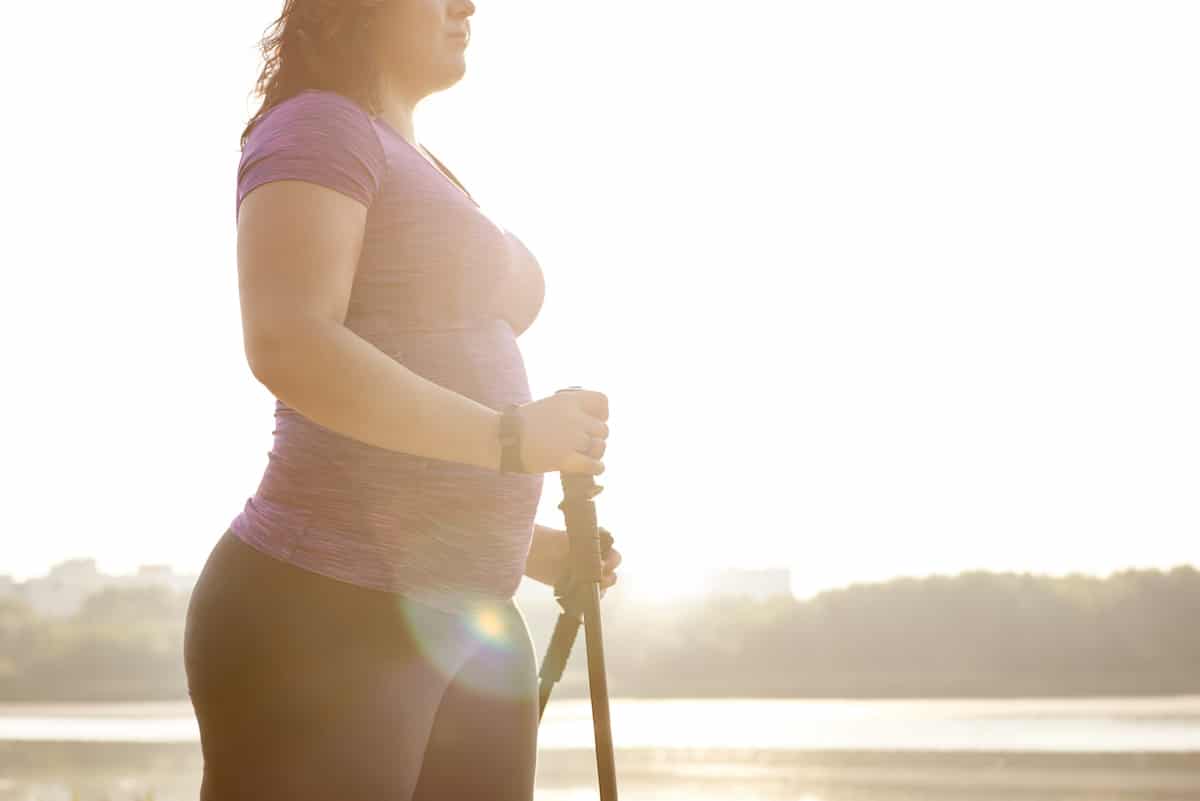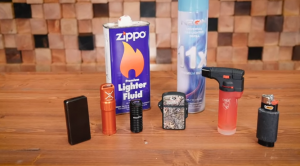From sprained ankles to snakebites, there are a lot of dangers to account for when camping or hiking. However, one danger often gets forgotten, even though it affects thousands of people every year, and that danger is chafing.
What We'll Cover
- What is Chafing?
- Where Does Chafing Commonly Occur?
- How to Prevent Chafing
- How to Treat Chafing
- Give Skin Time to Heal
- Gently Clean Chafed Area
- Relieve the Pain with Petroleum Jelly or Aloe Vera
- Use Medicated Ointment for Severe Chafing
- Complications for Healing
- Speak with a Doctor if Symptoms Persist
- Common Frequently Asked Questions About Chafing
- Stay Safe and Have Fun
Hiking through the wilderness with your friends or animal companions is one of the most amazing things to experience. There are many places in the wilderness to explore and are available for camping, rock climbing, mountain biking, and so much more. Unfortunately, there is one side effect many outdoors people experience due to their going out and being active, which is a condition known as chafing. The following article is my quick guide to understanding exactly what chafing is, where on the body it typically occurs, how you can prevent it, and what to do when such prevention fails (or when you fail to prevent chafing at all).
What is Chafing?
Chafing is a common yet incredibly annoying and sometimes painful skin problem. It is generally caused by some combination of moisture, friction, and bothersome fabric. When two or three of these factors combine, your skin may become irritated, causing it to sting, burn, and develop a red rash. That red rash and the symptoms associated with it are what we call chafing; in severe cases, it may include bleeding, swelling, and crusting along the lines of a rash from poison ivy.
Where Does Chafing Commonly Occur?
Chafing may occur anywhere in which moisture, friction, and irritating fabric come together in a bothersome way. This includes at your nipples and around your waist. However, there are some parts of the body that are more commonly associated with chafing due to their more frequently being in motion. Those parts of the body are:
- Underarms
- Thighs
- Groin
How to Prevent Chafing
Once you start chafing, it can be days before the rash will heal and you can move freely again without pain. As such, chafing while you’re on vacation or taking part in an outdoor activity can be one of the most frustrating and interruptive things. The best way to deal with chafing is to avoid it altogether. Get started with these easy yet effective prevention tips:
- Avoid cotton clothes. Switch out your cotton underwear and cotton shirts if you’re going out hiking, biking, exercising, or some other activity in which you’ll be moving your legs and arms. This is because all cotton fabrics will retain sweat and excess moisture. This keeps your skin damp and will trap moisture between the fabric and your skin; when you move, the moisture combined with friction and fabric will create chafing.
- Keep skin lubricated. Some people may be more prone to chafing than others and some situations are more likely to cause chafing than others. For example, someone wearing a skirt may be more likely to develop inner-thigh chafing than someone wearing shorts. If you are prone to chafing or are wearing clothes or doing an activity that may put you at a higher risk of chafing, then you should consider packing a lubricant or a camping first aid kit that includes one. Specialty creams, oils, and even lubricating powders can provide a much-needed layer of protection to cut down on friction. If you’re out camping or somewhere similar where special lubrication isn’t available, then applying a thin layer of deodorant is the next best thing. One of my favorite tips is sweeping a quick glide of anti-perspiring deodorant on my upper thighs whenever I’m wearing a skirt or about to do a long-distance bike ride. It really does work magic at preventing chafing and keeping you clean, dry, and comfortable.
- Purchase sports-focused undergarments. If you aren’t able to wear cotton underclothes, you might be asking yourself what you should wear or bring camping instead. The answer? Sports-focused undergarments. Look for breathable, synthetic fabrics that are designed and produced specifically to wick away sweat and allow your skin to breathe while you move. Sports-focused undergarments remove both moisture and irritating fabrics from the three-part equation that creates chafing.
- Clean up thoroughly after sweating. After sweating, swimming, walking in the rain, or any type of activity that involves moisture, you should remove your clothing as soon as possible. If you can’t completely change your clothing, then try and use a towel or similar cloth to wipe away sweat and any other moisture.
- Go seamless. Seamless clothing won’t cause skin chafing, as this type of clothing is designed to reduce the amount of friction between your body and its fabric. Instead, the seamless fabric is designed to move with your body.
- Get properly fitted clothing to avoid friction. In addition to being made of more breathable materials, seamless fabrics cut down on friction because they are often designed to be worn snug against the skin. If you can’t go fully seamless, then you should try and do the next best thing, which is buying properly fitted clothing that won’t allow the material to excessively rub against your skin and thereby create chafing.
- Purchase anti-chafing body products. Chafing is not an uncommon thing. Rather, millions of Americans suffer from this frustrating and irritating side effect of exercising or wearing improper clothing. The positive side of chafing being so common is that it has led to the growth of an entire market of exciting products that will help prevent chafing altogether. We’ve discussed some of those products in previous sections, but a few specific anti-chafing body products everyone should try at least once include anti-chafing shorts, thigh bands, and chafing creams.
How to Treat Chafing
Here are some ways to effectively treat chafing:
Give Skin Time to Heal
Chafing is an irritating and often painful experience, and the more you move once you have a rash caused by chafing, the more you’re going to irritate that rash and cause more pain. The most important thing you can do to stop the pain and prevent the spread of your rash is to minimize any and all activities that may contribute to irritating your patch of chafed skin. In other words, give your skin a chance to heal.
If you’re sore between your legs or buttocks, stop walking long distances for the next couple of days. If a specific swimsuit is causing your irritation, throw it away and swap to a suit that sits differently on your body. Chafed skin can and will heal within a few days if you stop the activities that irritate it.
Gently Clean Chafed Area
As with other wounds, when you notice chafed skin, you should clean it with warm water and a mild type of soap to prevent against infection. Once the soap has been thoroughly rinsed out, use a towel to gently pat your skin dry. At the end of the day, consider bathing in Epsom salts, as this type of salt will help to clean and dry out your chafed skin. I recommend using two cups of Epson salt for a full bath and soaking for at least twenty minutes.
Relieve the Pain with Petroleum Jelly or Aloe Vera
Both aloe vera and petroleum jelly are great for treating chafed skin. Simply apply a small amount over the irritated skin and allow it to remain there. These two products will act as a sort of defense to protect the area and allow it to heal more quickly. Aloe vera is a particularly helpful product if you are dealing with itching as well as some inflammation. Just remember that while these two products are great for relieving the pain of rashes and skin irritation, you should never use them on chafed skin that has opened up and is bleeding.
Use Medicated Ointment for Severe Chafing
If you continue to have a rash or consistently suffer severe chafing, then you may find relief in an over-the-counter medicated ointment. Check to be sure the products are fragrance-free and follow all recommendations. The next segment of this article will talk about those severe cases in which regular avoidance and products aren’t working. In those scenarios, your doctor may prescribe you a type of topical steroid, which should significantly help even the most aggravating of chafed wounds heal.
Complications for Healing
Most people who suffer from chafing, whether it’s at their groin, inner thighs, or somewhere else, will enjoy fast relief if they promptly clean the area and allow the skin time to heal. Unfortunately, not everyone can take a break and sometimes you are put into a position in which you simply have to suffer the chafing for awhile. For example, if you are out on a multi-day hiking trip and start suffering from inner-thigh chafing, then you may be unable to really allow your skin to start healing until after you get home; by the time you get back to your house, your chafed skin may have developed more serious complications.
Some of these more-serious complications for healing from chafed skin include:
- Bleeding
- Discoloration
- Swelling
- Crusting
All of these symptoms indicate that your chafed skin isn’t healing correctly and may, in fact, be infected with some sort of bacteria. Whenever your chafed skin goes beyond a mild red rash or if it persists for longer than a week, you should know it is time to seek medical attention.
Speak with a Doctor if Symptoms Persist
Bleeding, discoloration, swelling, and crusting skin are all signs that it’s time to schedule a visit with your doctor. You should also see your doctor if your skin becomes black or otherwise discolored where it is becoming chafed. Your doctor will offer a full examination and prescribe you with the right antibiotic or topical steroid to help remove any bacteria and expedite the healing process.
In some cases, however, there may be other things at play that are contributing to your increased incidence of chafing. When you visit your doctor, in addition to examining the chafed skin, he or she will likely also ask you a number of lifestyle questions that pertain to what you’re eating and how often you’re drinking water. People who are overweight are more prone to chafing, especially during hotter weather or when working out.
Another common factor for people who tend to suffer more frequently from chafed skin is a diet lacking enough vitamins A and C. Both these vitamins are antioxidants that have been shown to reduce chafed skin. If your doctor determines that you might be at a vitamin A and C deficiency, they may recommend either taking supplements or enriching your diet by consuming more spinach, broccoli, kale, carrots, cucumbers, guava, and tomatoes.
Finally, your doctor may ask how much water you consume on a daily basis as well as how many diuretics (which would include coffee and alcohol as well as certain drugs). If your body isn’t getting enough hydration for how active you are, then this may be why you are suffering more frequently or more severely from chafed skin.
Common Frequently Asked Questions About Chafing
I hope the above guide gave a good run-down of all the specific facts and things to know about chafing. If you have questions not quite answered, check out the following common FAQs.
- How long does chafing last? When properly cleaned and left to heal, chafing should last fewer than three days.
- I heard baby powder can relieve chafing, is this true? Yes and no. Baby powder is great for absorbing that excess sweat and moisture that exacerbates friction and causes chafing. It also nicely soothes already-irritated skin to help reduce the pain from chafed skin. However, if you clump too much baby powder on your skin, it can have the opposite effect.
- Can I get boils from chafing? Yes, but it’s rare. Boils from chafing tend to happen when your skin is exposed to constant chafing — the type of chafing that you should have talked to a doctor earlier about. If you are getting boils, then schedule a doctor’s appointment ASAP.
Stay Safe and Have Fun
While those who go for long hikes or enjoy other outdoor activities that feature a lot of moving around may suffer from chafing from time-to-time, the good news is that you can reduce your risk. Staying hydrated, wearing the right clothes, eating the right foods, and using the right anti-chafing products will all significantly reduce your risk of becoming chafed. And if it does happen to you, then just follow the above healing tips and you’ll be healing in just a few days. So go ahead: grab some new seamless shorts and enjoy all the outdoor activities this season has to offer!
The responses below are not provided, commissioned, reviewed, approved, or otherwise endorsed by any financial entity or advertiser. It is not the advertiser’s responsibility to ensure all posts and/or questions are answered.



![Best Archery Sets This 2023 [Men & Women]](/assets/images/8cf78150f1d9d7a0c175609145d21517.png)

